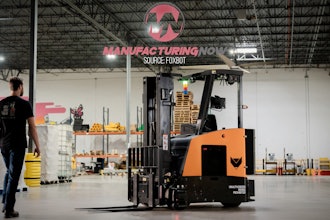The recent Jensen Farms Listeria outbreak has killed dozens of consumers unlucky enough to pick up contaminated cantaloupe from their grocers' shelves. Since the outbreak, well over one hundred cases have been identified, and over two dozen people have died.
Food and Drug Administration (FDA) investigators now believe that the contamination can be blamed on one or more conditions at the farm and in its packaging and cold storage facilities:
- The farm had recently acquired packaging equipment from a potato processor and failed to adequately clean it before installing it in its facility.
- The floor of the facilities reportedly had puddles of standing water near the produce.
- Cantaloupes were not thoroughly dried before being cooled.
- Water untreated with antimicrobial solution was used to wash the melons.
- A truck used to cart away unsellable cantaloupe was parked near the entrance of the facility.
Each of these situations present an opportunity for Listeria bacteria to proliferate. USA Today reports that a mere six days before the outbreak began, Primus Labs, an independent auditing company, gave Jensen Farms a "superior" rating on its safety audit. The situation should be reminiscent of Peanut Corporation of America's 2009 recall, in which the company pointed to stellar ratings from its auditor, AIB International, in defending itself after its salmonella outbreak killed dozens.
In the wake of the cantaloupe recall, two separate lettuce firms have recalled their products due to possible Listeria contamination. In the case of True Leaf Farms, The Wall Street Journal reports that the company had been submitting samples of its produce to a new FDA-led research initiative undertaken to help the agriculture and food processing industries as well as federal regulators understand "[safety] vulnerabilities in fresh produce." The result, in this case, was that the contamination was caught before any illnesses were reported. To date, both Listeria-linked lettuce recalls have no reported victims.
In the meantime, FoodSafety.gov -- a food safety-focused partnership of various federal agencies including the FDA, U.S. Department of Agriculture, and Center for Disease Control and Prevention -- has launched a new page devoted to teaching consumers how to reduce their risk of contracting Listeriosis. The page includes "helpful" tips like wiping up spills and avoiding unpasteurized milk. The list is a little reminiscent of the requisite local newscast segment at the beginning of every winter, during which the meteorologist reminds viewers to wear mittens to keep their hands warm. The fact is, this "tips" page probably serves the more important purpose of quelling public panic in the face of what is an unsettling truth--when it comes down to it, Listeria can't always be prevented at the consumer level. The "door close" button in an elevator doesn't actually do anything -- other than give the rider a sense of control as he steps into an uncontrollable space.
And even before FoodSafety.gov emailed me and all its subscribers a link to its new "wash your veggies to avoid Listeriosis" page, MSNBC was running with the headline, "Consumers couldn't have washed away cantaloupe contamination, experts say." Apparently the Listeria contamination was so prolific that standard -- or even intense -- at-home cleaning methods wouldn't have removed enough of the bacteria to make any difference.
Auditors aren't infallible, and shoppers shouldn't have to install microbiological testing equipment in their kitchens. Consumer "tips" are well-intentioned but vacuous. The only thing that seems to have worked right in this sad saga is True Leaf Farms' voluntary participation in the FDA's research study. This initiative requires dedicated scientists who perform and document research as well as the willing participation of food processors and packagers interested in learning how to make their facilities safer and better. Scientists, food manufacturers and regulators can work together to make sure that auditors and consumers aren't left holding the bag on food safety.






















